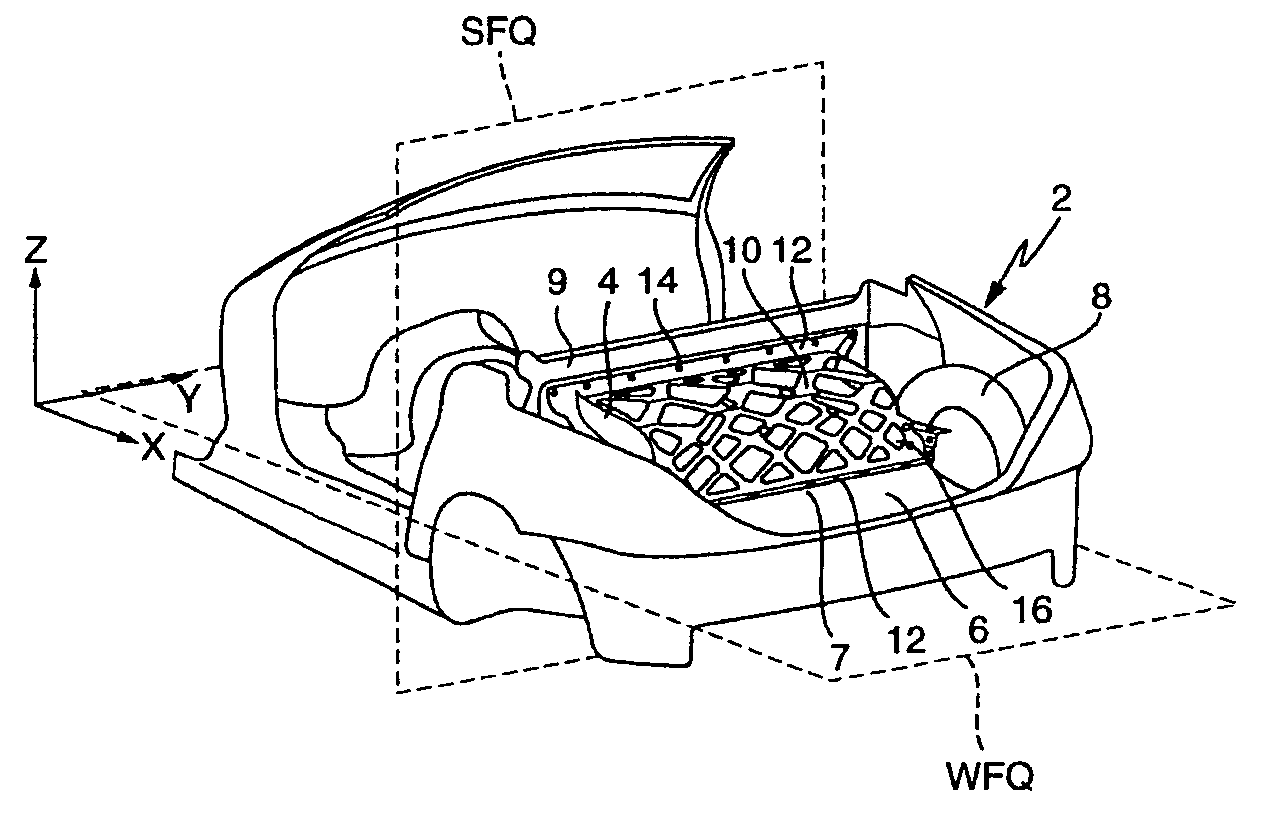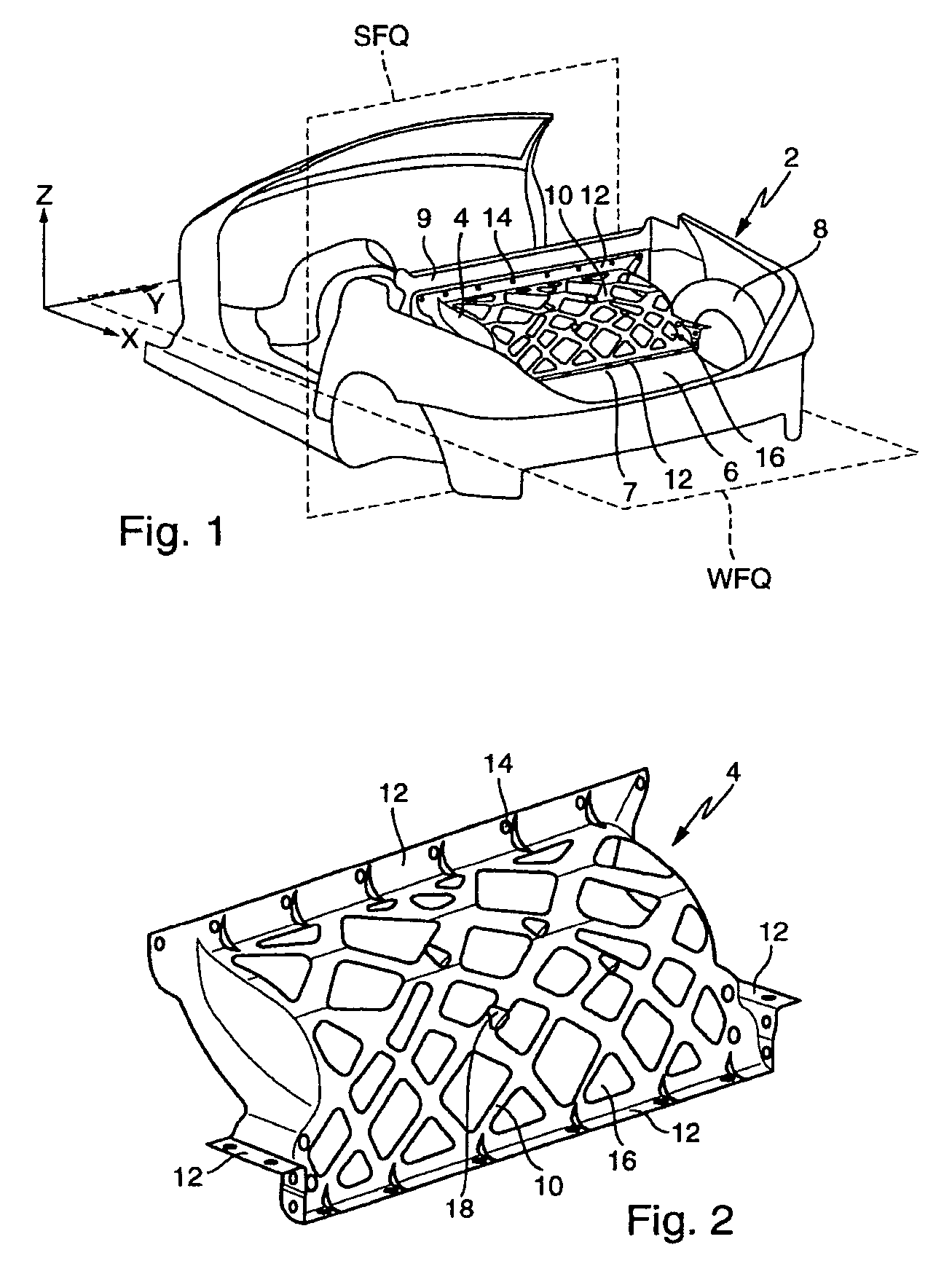Separating device for the bodywork of a vehicle
a bodywork and vehicle technology, applied in the direction of roofs, transportation items, tank vehicles, etc., can solve the problems of increasing the stiffness of the bodywork, not optimizing the arrangement in respect and not always expedient, so as to reduce the weight of the component, the bodywork stiffness is higher, and the effect of reducing the weigh
- Summary
- Abstract
- Description
- Claims
- Application Information
AI Technical Summary
Benefits of technology
Problems solved by technology
Method used
Image
Examples
Embodiment Construction
[0021]The detail illustrated in FIG. 1 of the self-supporting bodywork 2 comprises a rear compartment 6 which is separated from a fuel tank compartment (not illustrated specifically) by means of a separating arrangement 4. The separating arrangement 4 extends from a base 7 of the rear compartment 6 as far as a crossmember 9 and between two wheel houses 8, of which only the right-hand one can be seen in the perspective illustration. The separating arrangement 4 has a curvature in relation to a horizontal transverse plane of the vehicle WFQ and a vertical transverse plane of the vehicle SFQ.
[0022]A detailed illustration of the separating arrangement 4 is provided by FIG. 2. The curvature of the separating plane is designed concavely in relation to the WFQ and the SFQ, this bringing about an enlargement of the fuel tank compartment. The separating arrangement 4 has reinforcing struts 10 which correspond to the force flow directions, which are dependent on the type of vehicle.
[0023]The ...
PUM
 Login to View More
Login to View More Abstract
Description
Claims
Application Information
 Login to View More
Login to View More - R&D
- Intellectual Property
- Life Sciences
- Materials
- Tech Scout
- Unparalleled Data Quality
- Higher Quality Content
- 60% Fewer Hallucinations
Browse by: Latest US Patents, China's latest patents, Technical Efficacy Thesaurus, Application Domain, Technology Topic, Popular Technical Reports.
© 2025 PatSnap. All rights reserved.Legal|Privacy policy|Modern Slavery Act Transparency Statement|Sitemap|About US| Contact US: help@patsnap.com


